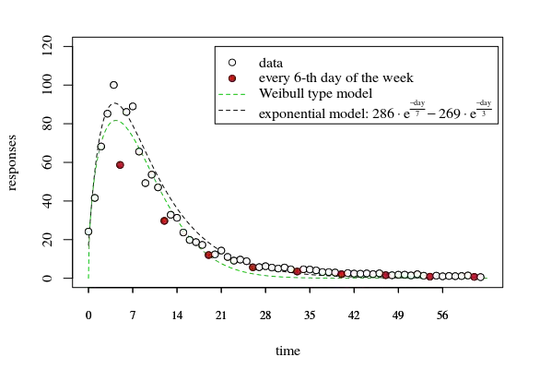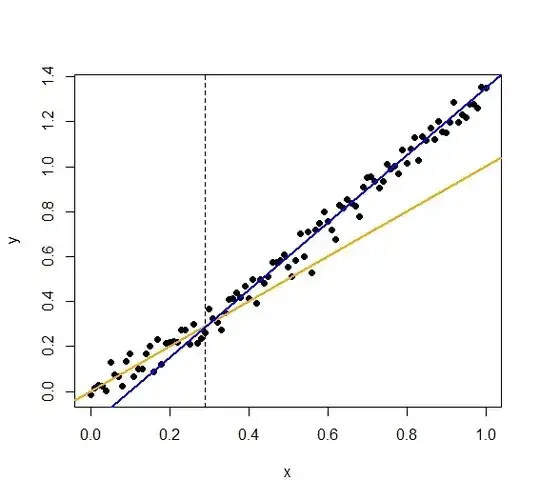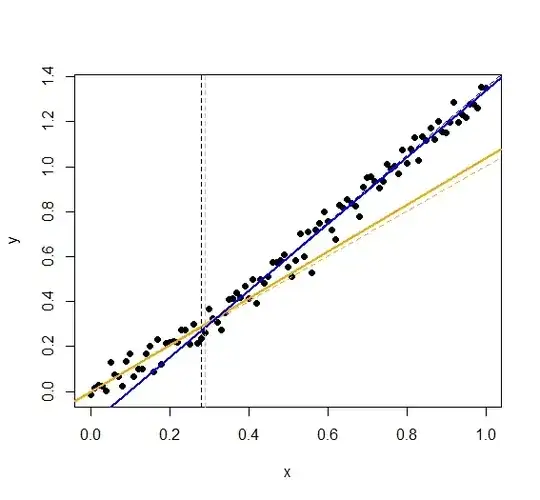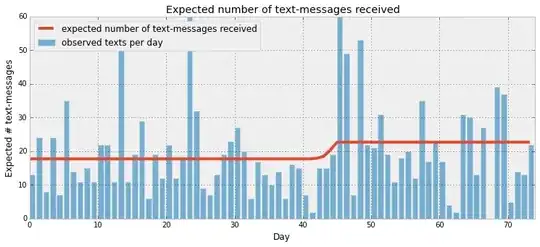Here's a solution to your problem using BUGS.
First, let's make some data (in R):
set.seed(121)
a1 <- 1
a2 <- 1.5
b1 <- 0
b2 <- -.15
n <- 101
changepoint <- 30
x <- seq(0,1,len=n)
y1 <- a1 * x[1:changepoint] + b1
y2 <- a2 * x[(changepoint+1):n] + b2
y <- c(y1,y2) + rnorm(n,0,.05)

The changepoint is not obvious. Let's just plot where the split is:

The model states that there is one change point, $\tau$, that separates the two linear regimes. I'll assume that both regimes share the same variance (which might not be the case):
$$y_i \sim \mathcal{N}(a_1 x_i + b_1, \sigma^2 ),~ ~ i \leq \tau$$
$$y_i \sim \mathcal{N}(a_2 x_i + b_2, \sigma^2), ~ ~ i \gt \tau$$
$$a_i \sim \mathcal{N}(\alpha_a,\beta_a), ~ i=1,2$$
$$b_i \sim \mathcal{N}(\alpha_b,\beta_b), ~ i=1,2$$
$$\tau \sim \text{DiscreteUniform}(x_{init}, x_{end})$$
I will not define $\alpha, \beta$ as hyperparameters, but will just choose reasonable values looking at the available data.
This model can be written in Bugs like this:
model {
tau ~ dcat(xs[]) # the changepoint
a1 ~ dnorm(1,3)
a2 ~ dnorm(1,3)
b1 ~ dnorm(0,2)
b2 ~ dnorm(0,2)
for(i in 1:N) {
xs[i] <- 1/N # all x_i have equal priori probability to be the changepoint
# the normal's mean depends where the split is
mu[i] <- step(tau-i) * (a1*x[i] + b1) + step(i-tau-1) * (a2*x[i] + b2)
# using the zero's trick
phi[i] <- -log( 1/sqrt(2*pi*sigma2) * exp(-0.5*pow(y[i]-mu[i],2)/sigma2) ) + C
dummy[i] <- 0
dummy[i] ~ dpois( phi[i] )
}
sigma2 ~ dunif(0.001, 2)
C <- 100000
pi <- 3.1416
}
I used the zero's trick to define the likelihood (the standard dnorm was giving me errors).
If you run the model on the previous data, these are the results after 100k iterations:
mean sd MC_error val2.5pc median val97.5pc start sample
tau 33.830000 14.4600000 0.71290000 22.000000 29.000000 85.000000 10001 100000
a1 1.050000 0.1318000 0.00688100 0.826400 1.039000 1.345000 10001 100000
a2 1.457000 0.1227000 0.00677100 0.925400 1.483000 1.542000 10001 100000
b1 -0.003780 0.0210100 0.00108500 -0.060560 -0.002420 0.031020 10001 100000
b2 -0.122000 0.1123000 0.00623400 -0.187800 -0.146900 0.366500 10001 100000
sigma2 0.002117 0.0003647 0.00001084 0.001565 0.002065 0.002993 10001 100000
Notice that the true value of $\tau$ for my artificial data is at 30, ie, at the 30th data point. The model proposes the median at the 29th.
The next plot shows the median estimates against the true values (the estimated BUGS values correspond to the stronger lines):




